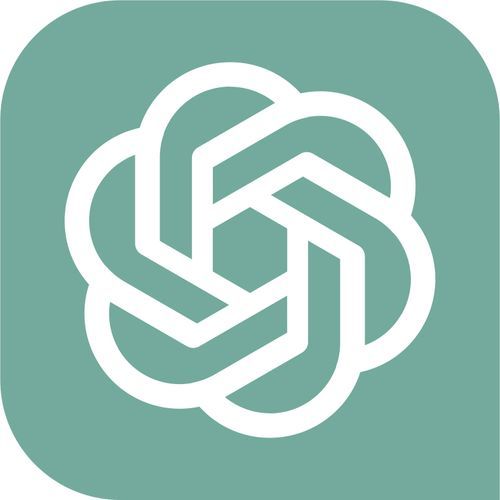Library of teambuilding games & icebreakers


Corporate survival challenge
Channel your inner "Survivor" with the corporate survival challenge! Teams compete in a series of physical and mental challenges inspired by survival shows, testing their problem-solving, strategy, and endurance. Who can outwit, outplay, and outlast?This is ideal for larger groups, giving everyone the chance to shine. It promotes teamwork, leadership, and resourcefulness—all while adding a fun, competitive edge. It’s great for building resilience and camaraderie in the workplace, with some light-hearted rivalry thrown in.
Corporate survival challenge
Channel your inner "Survivor" with the corporate survival challenge! Teams compete in a series of physical and mental challenges inspired by survival shows, testing their problem-solving, strategy, and endurance. Who can outwit, outplay, and outlast?
This is ideal for larger groups, giving everyone the chance to shine. It promotes teamwork, leadership, and resourcefulness—all while adding a fun, competitive edge. It’s great for building resilience and camaraderie in the workplace, with some light-hearted rivalry thrown in.
How to play:
- Organize physical and mental challenges, like obstacle courses or puzzles.
- Divide participants into teams to compete against each other.
- The team with the most points at the end of the challenges wins!
Gallery



Video


Michelangelo
Provide teams with sculpting materials such as clay, Play-Doh, or modeling clay. Challenge them to create sculptures based on given themes or prompts, encouraging imaginative interpretations and creative expression. Select a judge to choose the best one to determine a winner.
Michelangelo
How to play:
Provide teams with sculpting materials such as clay, Play-Doh, or modeling clay. Challenge them to create sculptures based on given themes or prompts, encouraging imaginative interpretations and creative expression. Select a judge to choose the best one to determine a winner.
Example: The prompt says design a Simpsons character with play-doh (unintentional pun).
Materials needed: Sculpting materials (clay, Play-Doh, modeling clay)
Benefits:
- Tangible manifestation of creativity: Get ready to witness magic in action as your team members mold and shape their creative visions into physical forms. Their sculptures will be concrete proof of their incredible imagination, leaving everyone in awe and inspired.
- Celebration of individuality: Embrace the uniqueness and diversity of interpretations as each team member unveils their extraordinary sculpture. This game creates an environment that celebrates individuality and appreciates the creative expressions of others.
Gallery



Video


Typing race
Who would have made the best 1950s receptionist? You can find out with this fun activity. Anyone who is interested should gather in one space with their keyboards or laptops. Announce the words that people should type (or write them on a white board) Set a timer and see who can get the typing done the fastest. This is helpful for developing typing skills and is also a great refresher for hand-eye coordination during a monotonous day.
Typing race
How to play Typing race
Who would have made the best 1950s receptionist? You can find out with this fun activity. Anyone who is interested should gather in one space with their keyboards or laptops. Announce the words that people should type (or write them on a white board) Set a timer and see who can get the typing done the fastest. This is helpful for developing typing skills and is also a great refresher for hand-eye coordination during a monotonous day.
Gallery



Video


Body Language Detective
Body language is a big deal when it comes to active listening. It's like the unsung hero of effective communication. Think about it – when you're really listening, you naturally make eye contact, nod along, and maybe even lean in a bit. These little gestures show the speaker that you're engaged and tuned in. Plus, mirroring their body language can create a connection.
Body Language Detective
Body language is a big deal when it comes to active listening. It's like the unsung hero of effective communication. Think about it – when you're really listening, you naturally make eye contact, nod along, and maybe even lean in a bit. These little gestures show the speaker that you're engaged and tuned in. Plus, mirroring their body language can create a connection.
So, it got us at Surf Office thinking; What game could incorporate body language and active listening?
*Lightbulb ping moment*
Introducing Body Language Detective, a Surf Office exclusive!
How to play
- Create scenario cards with various social situations or emotions. For example, "Job interview," "First date," "Conflict resolution," "Surprise party," "Job promotion celebration," and so on. Each card should describe the setting and the emotions or dynamics involved.
- Gather the participants in a circle or sitting in a room.
- One participant (the "actor") selects a scenario card without revealing it to the others.
- The actor then starts enacting the scenario silently through body language and facial expressions only, without using any verbal communication.
- The other participants (the "detectives") observe the actor's body language closely.
- After a set period (e.g., 1-2 minutes), the actor stops the role-play.
- The detectives then take turns discussing what they observed:
- What emotions or situations did they perceive?
- What specific body language cues led them to their conclusions?
- Did they notice any changes in body language during the role-play?
- Once the detectives have discussed their observations, they collectively make a guess about the scenario being portrayed.
Gallery



Video


Secret Noun
Sharpen deductive skills! In Secret Noun, one person selects a noun, and the rest of the team uses questions to guess the word.
Secret Noun
Sharpen deductive skills! In Secret Noun, one person selects a noun, and the rest of the team uses questions to guess the word.
Instructions on how to play:
- Choose one person to be the secret noun selector.
- This person picks a secret noun and keeps it hidden.
- The rest of the team takes turns asking yes/no questions to narrow down and eventually guess the secret noun.
- Set a time limit for each round to keep the game dynamic.
Why it's a great team building game:
- Communication skills: Enhances the team's ability to ask strategic questions and deduce information.
- Team engagement: Fosters a collaborative environment as everyone works together to solve the mystery.
- Critical thinking: Challenges participants to think creatively and strategically.
Top tip to help the game run smoothly: Encourage the person with the secret noun to think creatively and choose a word that allows for diverse questions. After each round, discuss the team's approach and share insights on effective questioning.
Gallery



Video


Which cartoon character would you be?
What silly character (or creature) are you most like? Have everyone go around the room, and in addition to the basics like name and role, ask them to share which cartoon character they would play and why. For example, a rugged outdoorsman might say he is like Sven from the Disney classic Frozen, while a particularly studious young woman might say she is like Lisa Simpson from the old Simpsons show.
Which cartoon character would you be?
How to play Which cartoon character would you be?
What silly character (or creature) are you most like? Have everyone go around the room, and in addition to the basics like name and role, ask them to share which cartoon character they would play and why. For example, a rugged outdoorsman might say he is like Sven from the Disney classic Frozen, while a particularly studious young woman might say she is like Lisa Simpson from the old Simpsons show.
Gallery



Video


Departmental meet and greets
Do you have different departments that tend to work in silos? In this case it can be a smart idea to organize happy hours where everyone can meet and mingle. You can go as far as assigning tables with mixed groups, or just encourage people to network more organically. A cross-departmental meet and greet is a simple and intuitive way to chat and get to know each other.
Departmental meet and greets
How to host Departmental meet and greets
Do you have different departments that tend to work in silos? In this case it can be a smart idea to organize happy hours where everyone can meet and mingle. You can go as far as assigning tables with mixed groups, or just encourage people to network more organically. A cross-departmental meet and greet is a simple and intuitive way to chat and get to know each other.
Gallery



Video


Leadership pizza
This game allows players to explore their potential leadership strengths by creating their pizza with “skill” toppings.
Leadership pizza
This game allows players to explore their potential leadership strengths by creating their pizza with “skill” toppings.
How to play:
Participants draw out a pizza with six slices. They are then asked to put toppings on their pizza, but instead of mushrooms, it’s a skill that they believe they would excel at. Once the pizzas are complete, people present their pizza, explaining why they chose their skills and engaging in a group discussion.
After talking amongst one another, receiving feedback, and discussing their strengths and weaknesses, if you’re willing to take the conversation a step further, everyone revisits their pizza and updates their skills according to feedback.
Materials you’ll need: Paper and general arts and crafts materials. Tables and chairs for drawing surfaces
How many people: Small to mid-sized teams (8-16 people)
Gallery



Video


Three-line scene
Anyone who’s played beginner improv games before may have encountered a game called “Yes, and”. In it, people work together to build an increasingly ridiculous story.
Three-line scene
How to play Three-line scene
Anyone who’s played beginner improv games before may have encountered a game called “Yes, and”. In it, people work together to build an increasingly ridiculous story. For example:
- Person 1: “I went to the gym this morning.”
- Person 2: “Yes, and your arms look fantastic.”
- Person 3: “Yes, and they’d be perfect for arm wrestling.”
- Person 1: “Yes, and I want to tattoo my partner’s name on them.”
- Person 2: “Yes, and they’ll probably want to marry you after.”
Three-Line Scene takes that concept and simplifies it. This time, pairs of colleagues work together to say one line each, using “yes, and” to build on whatever the previous person said. Heads up, it works best when you say statements vs questions. For example:
- Person 1: “I went to the gym this morning.”
- Person 2: “Yes, and you’re making me feel guilty about eating this cake.”
- Person 1: “Yes, and I’m not going to stop until you become my gym partner.”
The aim is to move fast, think quickly, and not worry about saying the ‘right thing’. The game works well because it rewards creativity and is inherently positive. Those enthusiastic “yes, and” responses embolden new improvisers and make them feel comfortable thinking on their feet and contributing to the task.
We don’t have to explain how helpful that is to team collaboration! The fact teammates practice the art of agreeing with their colleagues (vs dismissing their suggestions) is useful too. With any luck, it’ll transfer into everyday conversations.
Gallery



Video


One-word check-in
One-word check-in is a quick activity that helps gauge the mood and mindset of all team members. It’s ideal as a warm-up or to start a meeting with a pulse check.
One-word check-in
One-word check-in is a quick activity that helps gauge the mood and mindset of all team members. It’s ideal as a warm-up or to start a meeting with a pulse check.
Set up:
In a circle, ask each team member to describe their current feeling, focus, or attitude in just one single word. They might give you positive input like motivated or focused, but they might let you know how tired and overwhelmed they feel, so it’s important to listen closely. Once everyone has spoken, look for recurring themes and reflect on those as a group.
Gallery



Video


Shared goals
When the whole gang's aiming for the same bullseye, see it as though it’s a motivational magnet. Shared goals keep everyone on track, turning coworkers into the dream team who want to see the best in you. Shared goals activity - Vision board creation: Set up a creative station with magazines, newspapers, scissors, glue and large poster boards. Instruct colleagues to create individual vision boards by cutting out images, words and phrases that represent their career goals, aspirations and values. Encourage participants to share their completed vision boards with the group and explain their choices. Discuss common themes and goals that emerge, showcasing the team's shared aspirations. This visually engaging activity strengthens the sense of unity and purpose among colleagues.
Shared goals
When the whole gang's aiming for the same bullseye, see it as though it’s a motivational magnet. Shared goals keep everyone on track, turning coworkers into the dream team who want to see the best in you.
Shared goals activity - Vision board creation:
- Set up a creative station with magazines, newspapers, scissors, glue and large poster boards.
- Instruct colleagues to create individual vision boards by cutting out images, words and phrases that represent their career goals, aspirations and values.
- Encourage participants to share their completed vision boards with the group and explain their choices.
- Discuss common themes and goals that emerge, showcasing the team's shared aspirations.
This visually engaging activity strengthens the sense of unity and purpose among colleagues.
Gallery



Video


Looks count
This card game challenges the psyche and asks employees to get outside their comfort zones. A fun game for a team that is making a company retreat and one that brings out the inner actor in everyone.
Looks count
This card game challenges the psyche and asks employees to get outside their comfort zones. A fun game for a team that is making a company retreat and one that brings out the inner actor in everyone.
How to play:
Split your team into large groups, around ten people, is ideal. Make a small deck of cards that includes an even amount of each suit (diamonds, clubs, etc.) which will then be evenly distributed. Team members draw a card, but without seeing it, the team-building organizer tapes it to their backs. Everyone is then instructed to go around talking to others based on the card on their back. The suit dictates the behavior:
- Spades are ignored
- Diamonds are treated well
- Act indifferent toward Hearts
After completing the game, sit down as a group and discuss how you were treated and how that made you feel. Group members will get the chance to acknowledge how they treat people as a marker of how others will perform and feel in the workplace.
Materials you’ll need: Desk of cards and ample space
How many people: Large teams (25+ people)
Gallery



Video


Interactive group map
In this engaging team warmup exercise, you have the group imagine the space that you’re in as a map. Their goal is to place themselves where they are from. The first few steps have the most energy, as people try to find relative geographies and move around the space and each other. This game can be played with teams of any size, but it tends to be more fun when people are from more diverse, spread out areas. If everyone is from the same state, simply scale down your map and have everyone stand in the town they’re from.
Interactive group map
How to play Interactive group map
In this engaging team warmup exercise, you have the group imagine the space that you’re in as a map. Their goal is to place themselves where they are from. The first few steps have the most energy, as people try to find relative geographies and move around the space and each other. This game can be played with teams of any size, but it tends to be more fun when people are from more diverse, spread out areas. If everyone is from the same state, simply scale down your map and have everyone stand in the town they’re from.
Gallery



Video


“If I were”…
One of the easiest games to play, this activity allows players to describe themselves in different situations. Simply read the prompts out loud and give everyone a chance to respond. Some things you can suggest are: If I were a country, I’d be…. If I were a song, I’d be… If I were a food, I’d be… If I were a brand, I’d be… If I were a cocktail, I’d be… If I were a wild animal, I’d be… If I were a mythical creature, I’d be…
“If I were”…
How to play “If I were”…
One of the easiest games to play, this activity allows players to describe themselves in different situations. Simply read the prompts out loud and give everyone a chance to respond. Some things you can suggest are:
- If I were a country, I’d be….
- If I were a song, I’d be…
- If I were a food, I’d be…
- If I were a brand, I’d be…
- If I were a cocktail, I’d be…
- If I were a wild animal, I’d be…
- If I were a mythical creature, I’d be…
Gallery



Video


Local Legends Expedition
The Local Legends Expedition is a quest for untold stories that have shaped your city's culture and history. By delving into local folklore, you'll piece together intriguing narratives and enrich your understanding of the community's roots. This adventure isn't just about exploration; it's about teamwork and research that illuminate the city's unique character.
Local Legends Expedition
The Local Legends Expedition is a quest for untold stories that have shaped your city's culture and history. By delving into local folklore, you'll piece together intriguing narratives and enrich your understanding of the community's roots. This adventure isn't just about exploration; it's about teamwork and research that illuminate the city's unique character.
Instructions
- Form teams with an interest in history and storytelling.
- Provide a list of clues related to local legends.
- Teams conduct research, interview locals, and gather information.
- Collaborate to weave together the stories into a cohesive narrative.
- Share your newfound knowledge and insights with each other.
Gallery



Video


Crisis scenario problem-solver
Teams are given a fictional crisis, like a hacked server or a flooded event venue, and they have to come up with solutions to save the day. Remote workers focus on virtual solutions, while in-office workers handle the on-the-ground details.In this hybrid version, the remote team is tasked with brainstorming virtual fixes—like tech solutions, backup plans, or virtual client support. Meanwhile, the in-office team works on practical strategies to tackle the crisis on-site, whether that’s coordinating logistics, handling communications, or finding last-minute resources. Both teams need to collaborate and stay in sync under time pressure to solve the crisis together. Finally, everyone shares their strategies to see how they tackled the issue from different angles. It’s a fun, fast-paced way to boost problem-solving skills while bringing remote and office workers together.
Crisis scenario problem-solver
Explanation:
Teams are given a fictional crisis, like a hacked server or a flooded event venue, and they have to come up with solutions to save the day. Remote workers focus on virtual solutions, while in-office workers handle the on-the-ground details.
In this hybrid version, the remote team is tasked with brainstorming virtual fixes—like tech solutions, backup plans, or virtual client support. Meanwhile, the in-office team works on practical strategies to tackle the crisis on-site, whether that’s coordinating logistics, handling communications, or finding last-minute resources. Both teams need to collaborate and stay in sync under time pressure to solve the crisis together.
Finally, everyone shares their strategies to see how they tackled the issue from different angles. It’s a fun, fast-paced way to boost problem-solving skills while bringing remote and office workers together.
Gallery



Video


Letter to myself
This is another great activity for ending a large group event. Instruct everyone to write a letter to themselves that involves what you just did. For example, if part of the event was creating new goals, ask them to write how they’ll accomplish that. Then, depending on the size of the group, have people either pair off to share their letter or read their letter aloud. Opening up this way is a nice step toward getting everyone to bond and collaborate.
Letter to myself
How to play Letter to myself
This is another great activity for ending a large group event. Instruct everyone to write a letter to themselves that involves what you just did. For example, if part of the event was creating new goals, ask them to write how they’ll accomplish that. Then, depending on the size of the group, have people either pair off to share their letter or read their letter aloud. Opening up this way is a nice step toward getting everyone to bond and collaborate.
Gallery



Video


Poetry Improv
Here is an exercise that will challenge participants and help them to think on the spot. Start by picking a poetry style, like a sonnet, haiku, or limerick.
Poetry Improv
Here is an exercise that will challenge participants and help them to think on the spot. Start by picking a poetry style, like a sonnet, haiku, or limerick.
How to play:
1. Give everyone vocabulary words to use within the poem.
2. Set a timer for five or ten minutes for the groups or individuals to complete their verses. You can also do this online via meeting software by using breakout rooms to work in private.
3. Have your brilliant poets read the masterpieces aloud.
You might want to come up with some extra fun by having judges rate poems, or coming up with awards for the best poem, worst poem, most creative, etc. If you want to enhance the improv component, have players finish each others’ phrases on the spot.
Gallery



Video


Fact or Fiction
Quick, simple, and surprisingly engaging, Fact or Fiction is a first-rate icebreaker game that challenges players to distinguish between true or false statements.
Fact or Fiction
Quick, simple, and surprisingly engaging, Fact or Fiction is a first-rate icebreaker game that challenges players to distinguish between true or false statements.
How to play Fact or Fiction
To play, one participant reads out a statement, and everyone else must guess whether it’s “fact” or “fiction.” The aim is simple: test people’s general knowledge on certain topics and have some fun in the process!
This question game often works best with a bit of planning, though. Try to compile a long list of fact/fiction questions beforehand that players can draw from. It’ll help the game flow and ensure you ask questions on a range of topics to keep it interesting.
Alternatively, you can forget the trivia and play Fact or Fiction with personal statements. Each player says something about themselves, and everyone else decides if it’s true or false! Examples include:
- I have traveled to every state in America. Fact or fiction?
- I can do the splits. Fact or fiction?
- I have an identical twin named David. Fact or fiction?
- My family emigrated here from France in 1880. Fact or fiction?
- I am bilingual. Fact or fiction?
Gallery



Video


Innovation Scramble
The Innovation Scramble challenge is an exercise in resourcefulness, creativity, and teamwork. As you brainstorm, prototype, and iterate, you'll discover how diverse perspectives can lead to breakthrough ideas. This activity not only hones problem-solving skills but also fosters an environment of collaborative ingenuity.
Innovation Scramble
The Innovation Scramble challenge is an exercise in resourcefulness, creativity, and teamwork. As you brainstorm, prototype, and iterate, you'll discover how diverse perspectives can lead to breakthrough ideas. This activity not only hones problem-solving skills but also fosters an environment of collaborative ingenuity.
Instructions
- Create teams with a mix of analytical and creative thinkers.
- Present a problem statement or challenge that requires an innovative solution.
- Teams scavenge for materials and brainstorm ideas.
- Collaborate to design and build a prototype of your solution.
- Present your innovations and discuss the collaborative process.
Gallery



Video


Safety song parody
Challenge employees to write and perform parodies of popular songs with safety-themed lyrics. Record the performances and have a voting process to select the best ones. Offer prizes for the top performances.This activity combines music and humor with important safety messages, making it memorable and entertaining. It encourages creativity and team spirit while reinforcing safety concepts in a fun way. Plus, who doesn’t love a good song parody?
Safety song parody
How to play:
Challenge employees to write and perform parodies of popular songs with safety-themed lyrics. Record the performances and have a voting process to select the best ones. Offer prizes for the top performances.
This activity combines music and humor with important safety messages, making it memorable and entertaining. It encourages creativity and team spirit while reinforcing safety concepts in a fun way. Plus, who doesn’t love a good song parody?
“Hey! Team mate! Leave those unsafe things alone! All in all you’re just a ‘nother slip in the hall” 🎶
Gallery



Video


Memory match across screens
Office and remote workers team up to match pairs of items. Remote workers describe their items, and office workers try to match them without seeing them.Remote participants start by picking an item from their home (like a weird-shaped mug or a funky pen), but instead of showing it, they give the office team a detailed description. The in-office team then tries to find a matching item in the office based on that description alone. It’s all about great communication and attention to detail. Once both teams think they’ve found a match, they reveal the items on camera to see if they actually paired them correctly! It’s a light-hearted, fun way to boost listening skills and teamwork between remote and in-office employees.
Memory match across screens
Explanation:
Office and remote workers team up to match pairs of items. Remote workers describe their items, and office workers try to match them without seeing them.
Remote participants start by picking an item from their home (like a weird-shaped mug or a funky pen), but instead of showing it, they give the office team a detailed description. The in-office team then tries to find a matching item in the office based on that description alone. It’s all about great communication and attention to detail. Once both teams think they’ve found a match, they reveal the items on camera to see if they actually paired them correctly!
It’s a light-hearted, fun way to boost listening skills and teamwork between remote and in-office employees.
Gallery



Video


Balance challenge
Sometimes called the “helium stick” exercise, this game creates engagement in a group and paves the way for more group learning. Have your group break into two groups and form rows. The two rows should be facing each other. Then, ask everyone to hold out their index fingers and place a long, thin rod across everyone’s fingers. They need to ensure it’s level before going further. Then, instruct them to move the rod up or down, but as a group where the rod stays level.
Balance challenge
How to play Balance challenge
Sometimes called the “helium stick” exercise, this game creates engagement in a group and paves the way for more group learning. Have your group break into two groups and form rows. The two rows should be facing each other. Then, ask everyone to hold out their index fingers and place a long, thin rod across everyone’s fingers. They need to ensure it’s level before going further. Then, instruct them to move the rod up or down, but as a group where the rod stays level.
Gallery



Video


Group story-telling
This game is great for better understanding how your coworkers' minds work. What better way to bond than to create something together - in this case, a story. You can do this with any number in your group. Plus, you can play this game as many times as you want, and the outcome will be different each time.
Group story-telling
This game is great for better understanding how your coworkers' minds work. What better way to bond than to create something together - in this case, a story. You can do this with any number in your group. Plus, you can play this game as many times as you want, and the outcome will be different each time.
Here’s how it works.
- Have everyone stand in a circle or semicircle where the entire group can get a good look at each other.
- The person who is running the event should decide on a story topic. You can pick anything, but be sure to use your imagination. Something like the middle ages to underwater adventures adds an element of fun (vs. a typical day at work or something more mundane). The more creative you can be, the better it will be for the group.
- Choose a person to kick things off with a few sentences. Then, they “pass” to the next person to continue the story.
- The passing continues until everyone has had an opportunity to add to the story. A few lines are sufficient, but encourage people to be creative.
- The last person to go should wrap up the overall story. It’s a good idea to let them know in advance that this will be their responsibility so they can think of a clever ending.
Gallery



Video

















